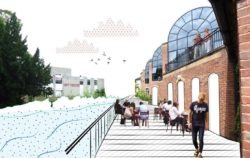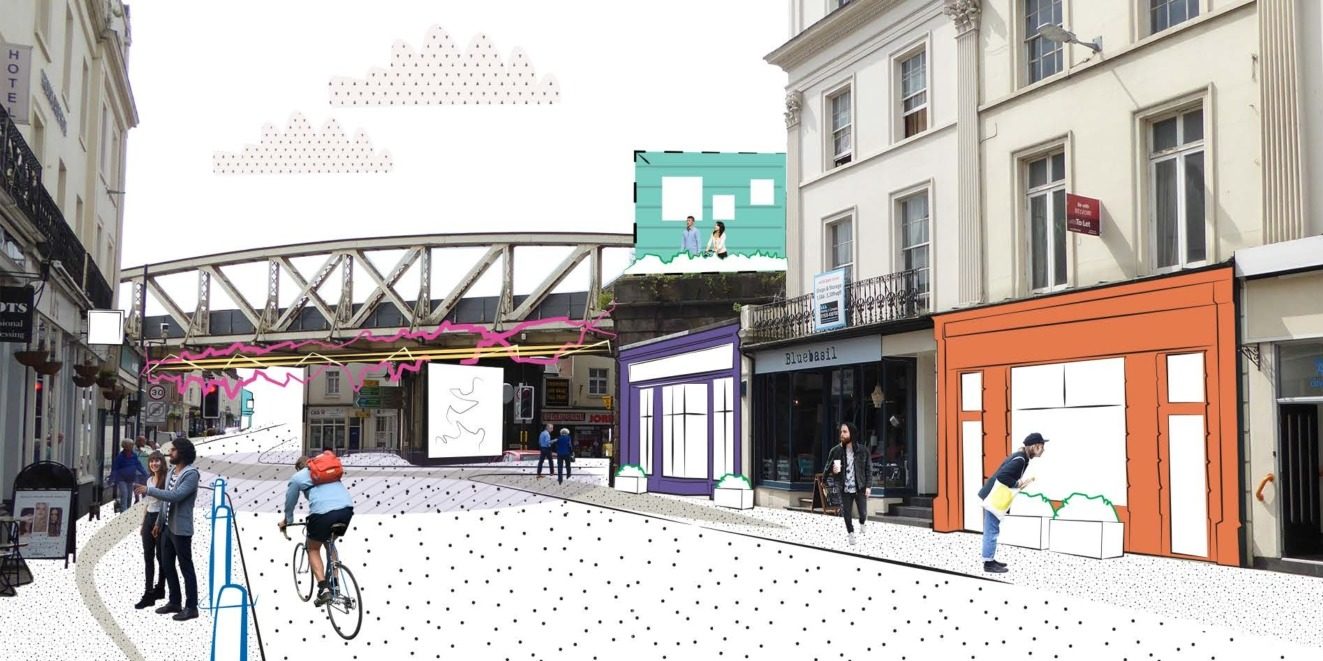Leamington “Creative Quarter” by Warwick District Council sparks divide
Warwick District Council (WDC) has proposed a controversial draft masterplan to create a “Creative Quarter” in Leamington Spa, which is now launched for public consultation.
Opposed by residents and councillors, the drafted plans involve renovating old landmarks and will affect a number of businesses and charities in Leamington Spa. The places concerned are mostly council-owned properties.
Preliminary suggestions include transforming the Town Hall into a restaurant and members’ club with new office space and areas for performances and events within. Spencer Yard may become an open air cinema, and a space for events.
The library could be relocated for the food market, and Bath Place car park turned into an “artists’ yard” with workspaces, shops, and new homes.
The post office, which is currently not under the council’s ownership, will possibly be sold and converted into a hotel. For the Pump Room, the coming years may see a new bar and restaurant, an expanded gallery, and redesigned foyer and cafe.
Elucidating the masterplan, Councillor Andrew Mobbs, who leads WDC, said: “This is a real opportunity for local people to help to shape the future of our town, by bringing together the strength and depth of creative talent so inherent in our community.”
Executives approved the draft masterplan on the evening of Thursday 29 November. The public consultation for this draft – conducted online with a survey and through hard copies distributed at Riverside House – began on 3 December, and will end on 21 January next year. If it gains sufficient support, councillors will vote on the final plan in 2019.
WDC will be hosting events to “support the public consultation”. They described: “The public can view a display of the Creative Quarter plans at the Leamington Spa Art Gallery & Museum from 7 December to 21 January, and there will be public briefing sessions during the consultation period.”
Regarding the idea behind the Creative Quarter, WDC explained: “A creative quarter needs to reflect and represent the creative community as a whole, including artists, makers, digital creatives, innovators, artisan food producers and more.

The reimagined Pump Room. (Credits: Warwick District Council)

The current Spencer Yard, dubbed the “most creative area” in Leamington. (Credits: Warwick District Council)
“Leamington must compete with London and Birmingham for new workers. The creative quarter should provide attractive workspace but also improve the cultural, culinary, recreation and night-time offers.”
They continued that the “initiative focusses on the rejuvenation of the Old Town area and seeks to find new and innovative uses for spaces that are currently underutilised or falling into disrepair”.
They added: “It follows the success of projects which include the ‘Creative Arches’ in Court Street, and ‘26HT’ an incubator facility for start-up gaming companies and micro enterprises in Hamilton Terrace.”
For the past year, WDC collaborated with Complex Development Projects (CDP) to plan the Creative Quarter. CDP was the team behind FarGo village in coventry.
Elaborating on their collaboration, WDC stated that CDP has consulted “over 100 creative businesses, organisations and individuals” for the “visionary project, which will foster the town’s many and diverse creative industries”.
A spokesman for CDP added: “Food, drink and events will create a vibe and a draw to this area, and could be a catalyst for igniting change in Old Town. Spencer Yard could be temporarily covered and heated for the winter, filled with deck chairs in the summer.”
Regarding the plan, The Boar spoke to the groups and organisations affiliated about their views. Both agreement and concern were stressed by those behind the plans, including uncertainty regarding its feasibility and implementation.
All efforts should be made to find public and community uses for them, and hopefully to provide ongoing revenue streams for the council, rather than one-off funding boosts through asset sales
– Luke Noel-Storr
Luke Noel-Storr, from Save Leamington From Warwick DC, shared that he supported the principle of the Creative Quarter. He expressed his concern for the “opacity around the plans”, and his doubts for the council’s attention towards “consultations”.
Regarding the publicly owned landmarks, he said: “All efforts should be made to find public and community uses for them, and hopefully to provide ongoing revenue streams for the council, rather than one-off funding boosts through asset sales.”
Leamington Together, a group consisting of the town’s residents, was formed to object to WDC’s headquarters relocation and press the council to look at alternative options to the renovations.
They are now looking to “keep up momentum” after their rally, and gather 10,000 signatures for their petition to thwart the council’s plans to relocate their headquarters.
Once enough signatures are gathered, the petition will be presented to the government and addressed nationally. Leamington Together further criticised the privatisation of the public spaces, such as the members’ club within the Town Hall, which is “the last thing Leamington residents need”.
They are also deeply concerned with the motivations of the council due to relaxed planning and legislation, which may allow proposals to be submitted under the guise of “creative plans”, but for targeted infrastructure to be eventually converted for residential usage.
Currently, the public has not been made aware of the plans prior to their implementation, which Leamington Together described as “undemocratic”. The Executive of the Council’s ruling group has one Leamington representative while the rest are from Kenilworth and Warwick, although Leamington has a larger population than the two towns combined.
Responding to the draft masterplan, Bill Gifford, County and District Councillor for Leamington and Milverton, commented that while reconstruction for some buildings is necessary, it is “odd to use developers to conduct this consultation process”.
Currently, the public has not been made aware of the plans prior to their implementation, which Leamington Together described as “undemocratic”
Brunswick Councillor Kristie Naimo shared that,while some dilapidated buildings would need repurposing to benefit small business hoping to expand, it is these businesses that need to be retained, not “sacrificed”.
She elaborated: “If we want to genuinely attract young people or people who work in the creative or digital sectors, they need to be able to stay here.
“If they can’t afford to live in Leamington, they’re going to go elsewhere. This council has been very poor at building necessary affordable housing in the town when it’s had the opportunity.”
Councillor of Arden Ward, Susan Gallagher, resigned and announced her independence from the party over the dispute surrounding the draft masterplan.
Speaking to The Boar, she highlighted the importance of the organisations and charities in the area that risk eviction, such as the Baitul Ehsan Ahmadiyyah Mosque, Royal Naval Club, and Leamington LAMP.
She revealed that while other councillors were pressured to vote in favour of the plans, and she resigned, “holding her word” to “charities [they’re] trying to protect”.
Moreover, the Creative Quarter has been in the making “for years”, and it was CDP that decided on the leases for the properties on behalf of WDC, which “cannot be democracy”, since “nobody knew” about the process either.
Finally, she said that although the quarter was meant to target young people, “Leamington is still very unaffordable” for them, and the term “creative plans” remains ambiguous.
“We have to look after the community,” she emphasised. Plans regarding the Creative Quarter and its following public consultation can be found here.
(Note: Images used in the article were provided by Warwick District Council. The banner photo shows a rejuvenated Bath Street, the photo on the left shows the new Pump Room, and the photo on the right shows the current Spencer Yard.)

Comments
Comments are closed here.